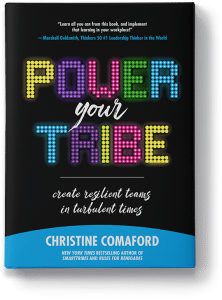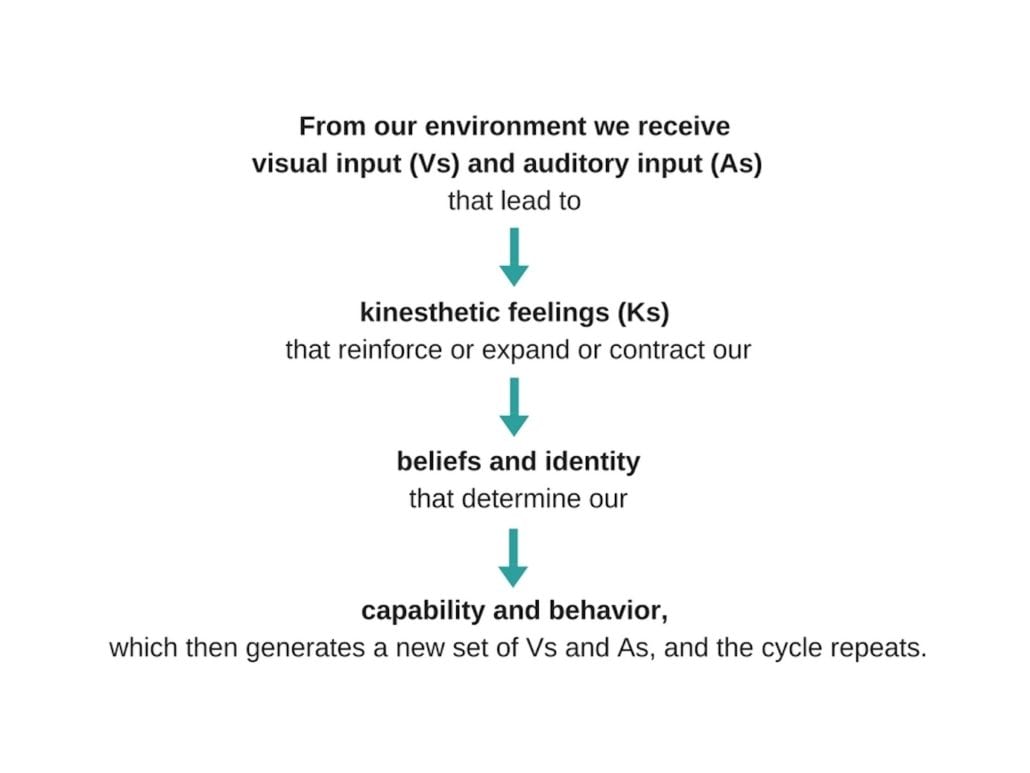
Featuring case studies and proven techniques, Power Your Tribe provides a set of powerful neuroscience-based tools to help managers identify emotions, release resistance, end isolation, focus on outcomes, and course-correct for continued success.





*As originally seen on Forbes.com
All day, every day, our systems are flooded with sensory information. These visual, auditory, and kinesthetic cues often recall our beliefs about the world and ourselves (our identity), which result in our either feeling good or feeling bad. If you’re on a sales team that feels bad, chances are you won’t be achieving your quota because your motivation and creativity is low. Enter VAK Anchoring.

How Humans Create Experiences
Our behaviors don’t always feel good, but they do always feel familiar to our creature neurology (our reptilian + mammalian brain combo). That’s why we repeat them—they are the best feeling option we have available once a trigger event has occurred. The key to changing bad-feeling behavior is to understand the structure of human experience.

The key to changing bad-feeling behavior is to understand the structure of human experience.
If we observe two things happening at the same time, our brains decide they are related, establishing new neural connections. This form of association is how anchoring works. If we create new associations with visual, auditory, and kinesthetic input (Vs, As, Ks in neuro-shorthand), we can change our behavior, because we are changing the neural connections in our brain. Remember, neurons that fire together, wire together. I discuss this in depth in a previous blog.
We experience the world through our senses and all key memories as well as emotional experiences have a minimum of a VAK trio associated with them. Anchors call up those sensory states and intentionally “set” a “recall” button in our body. In other words, we can recall specific reference experiences, associate them with something (anchor them to a space, a sound, or a touch), and create the meaning we would like to create.
Let’s try it now!
VAK Anchoring: 3 Minutes To Create The Feeling You Want

VAK Anchoring can help you increase your emotional agility.
Determine your anchor. Pick something unique, something you don’t do every day but also something not too unusual because you don’t want to call attention to yourself when you fire your anchor. For instance, my “soothing” anchor when I want to relax into sleep at night is to make a very loose fist with my left hand and slide my thumb between my pointer and middle finger. When I “fire” (use) that anchor, it helps me unplug from the day, and I notice I often even say “ahhhhhhh” out loud. Examples for your anchor could be your left hand squeezing your right wrist, or your right pointer finger touching your left elbow. You decide. Make it something easy to fire without others noticing, as well as an area that isn’t commonly touched by others so we can regulate when the anchor is fired.
Now let’s test it. Shake your body out, count backward from 10 to 1 if you need a bit more of a break, and then fire off your anchor again. Did you recall the confident state? If so, awesome! If not, that’s OK. Repeat the process, stepping even more deeply into the memory and recalling the VAK trio even more powerfully. Remember how the path of consent and curiosity leads to learning? The above process takes about 3 minutes per day to practice. Get curious and have fun with this!
In time, as you get more comfortable using anchors, you can start helping your family set them. You can help your kids set “homework” anchors (I love this one), or help your spouse set a “love” anchor, so they can feel deeply loved and cherished whenever they fire the anchor (or you do). There’s nothing like bringing new emotional agility capabilities and behaviors to your tribe both at work and home.
The Net-Net
How would you like to feel right now? Set a VAK anchor for it!
________________________________________________________________________________________________

Featuring case studies and proven techniques, Power Your Tribe provides a set of powerful neuroscience-based tools to help managers identify emotions, release resistance, end isolation, focus on outcomes, and course-correct for continued success.
_______________________________________________________________________________________________________